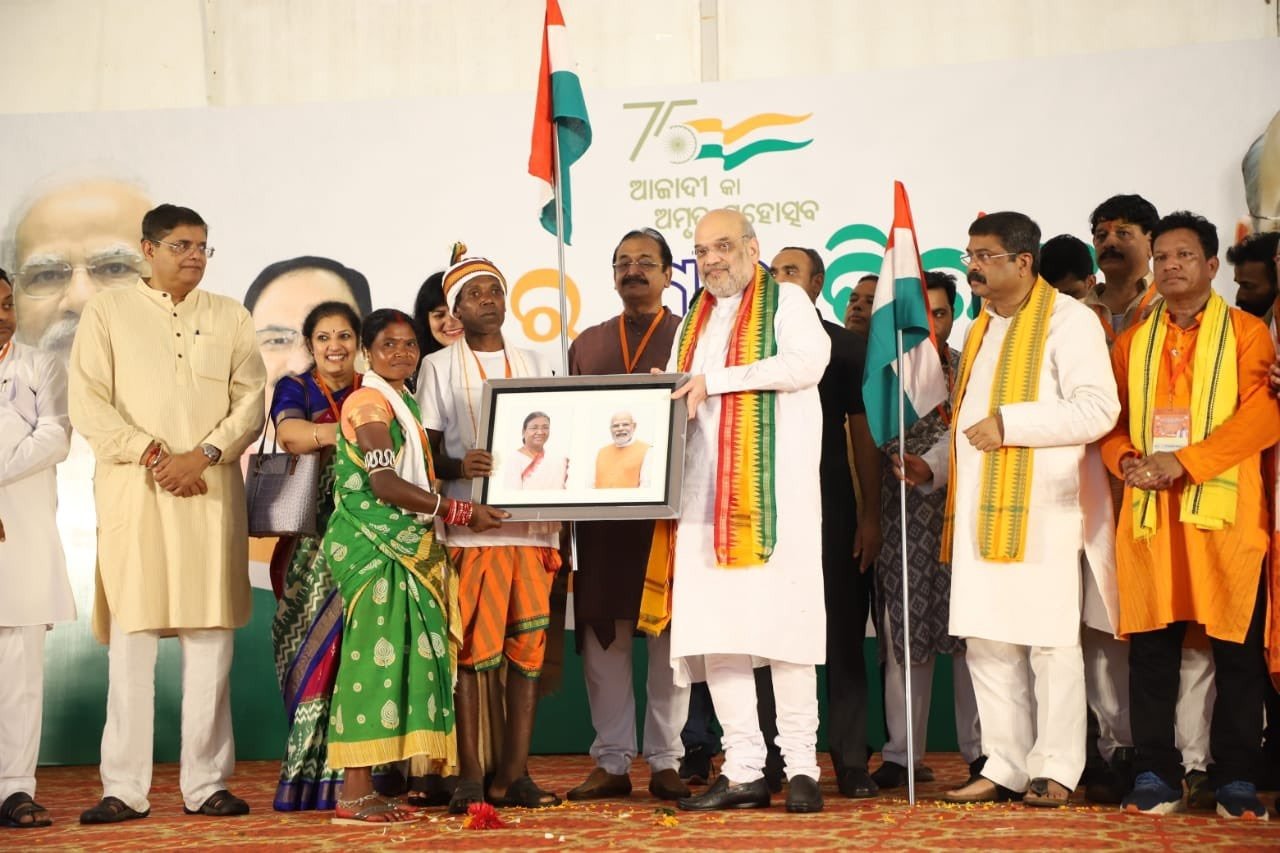NEW DELHI: The impact of the political developments in Bihar is likely to be felt in Odisha, where the BJP is going to use all its might to form government in the forthcoming Assembly elections which will coincide with the 2024 general elections.
Having learnt a lesson in Bihar, where it claimed it “paid the price” for being soft on the JDU that led to the “betrayal” by Nitish Kumar, the BJP has decided to go all out in Odisha where its main political opponent is the Biju Janata Dal (BJD) and its popular face and Chief Minister, Naveen Patnaik who is often termed as the “B-team” of the BJP due to the party’s long-term stand of supporting the BJP at the Centre.
During his two-day recent visit to the coastal eastern state, Home Minister Amit Shah has asked the party cadre to work on “mission 120”, referring to winning 120 seats in the next Assembly elections. While Opposition party leaders, including the Biju Janata Dal (BJD), publicly laughed off Shah’s claim as an “impossible” dream, deliberations among the BJD leaders are already happening on the political “threat” that they will face from the BJP, which wants to end the almost 24-year-rule of Naveen Patnaik as the CM of the state, in the next Assembly elections.
According to BJP leaders privy to the development, Shah, among other things, told the state party leaders to stop acting as “subservient” to the BJD and start treating it as an opposite political force rather than an ally, irrespective of what happens at the Central level and the personal equation among the top leaders from both the parties.
Like West Bengal, Odisha is among the two eastern states where the BJP has not come to power since its inception. In a sort of statement to show how serious Shah and the BJP are about winning Odisha, senior party leader and an organiser par-excellence, Sunil Bansal, was made in-charge of Odisha, replacing D. Purandeswari on Wednesday, just hours after Shah left Bhubaneswar.
The credentials of Bansal and the trust that Shah has on his abilities are well documented. Like BJP state president Samir Mohanty and Union Minister Dharmendra Pradhan, who is also a CM probable along with BJP tribal face Jual Oram, if BJP wins in Odisha, Bansal got his initial political training while being associated with the Akhil Bharatiya Vidyarthi Parishad (ABVP).
Bansal, earlier this week was also elevated to the post of national general secretary, as a recognition of his efforts in Uttar Pradesh where he was posted for 9 years and where he successfully managed four elections—2014, 2017, 2019 and 2022—in the state described as among the most politically complex regions of the country.
The two-day visit of Shah to Odisha, where he was in an extremely combative mood, came days after the remark made by BJP national president Jagat Prakash Nadda in Patna, just days before the JDU broke the coalition with the BJP, in which he said no regional party will survive in the coming days. Another warning signal—signifying how serious the BJP was about Odisha—that the BJD leaders have received, is the BJP’s decision to appoint Droupadi Murmu as the President of India.
The political dividend of sending Murmu, who is from Odisha and a tribal leader, as the President of India, will accrue to the BJP in a big way, a BJP national spokesperson told The Sunday Guardian. Out of the 147 seats in the Assembly, 33 seats are reserved for tribal candidates. The tribal population in the state constitutes 23% of Odisha’s total population.
In the 2019 Assembly elections, the BJP won 23 seats in the state, up from the 10 that it won in 2014. In the same elections, the BJP’s vote share increased by a massive 14% from the last election and it got 32.5% of the total votes. The vote difference between the BJD and the BJP, which was 25% in the 2014 polls, was reduced to 12% in 2019, signifying the speed at which the BJP was getting popular in the state.
The BJD national spokesperson and Rajya Sabha MP, Dr Sasmit Patra, told The Sunday Guardian that the party, as a policy, does not comment on “hypothetical political questions” while it is open to responding to questions related to Odisha government’s policies and schemes.
It is pertinent to mention that the two parties had worked together for 11 years from 1998 till March 2009 when the alliance broke over seat sharing agreements in which former Rajya Sabha MP, the late Chandan Mitra was nominated by L.K. Advani to arrive at a consensus with Naveen Patnaik. The two parties had together contested the Lok Sabha elections in 1998, 1999 and 2004 and two Assembly elections in 2000 and 2004.
In the 2004 Lok Sabha elections, the last of the Lok Sabha elections which they contested together, the BJD had won 12 seats and BJP 7 seats, of the 12 and nine seats that they contested respectively. The alliance together won 93 seats (BJD 61, BJP 32) of the 147 seats in the Odisha 2004 Assembly polls.
BJP learns from Bihar, wants to go all out in Odisha
- Advertisement -

